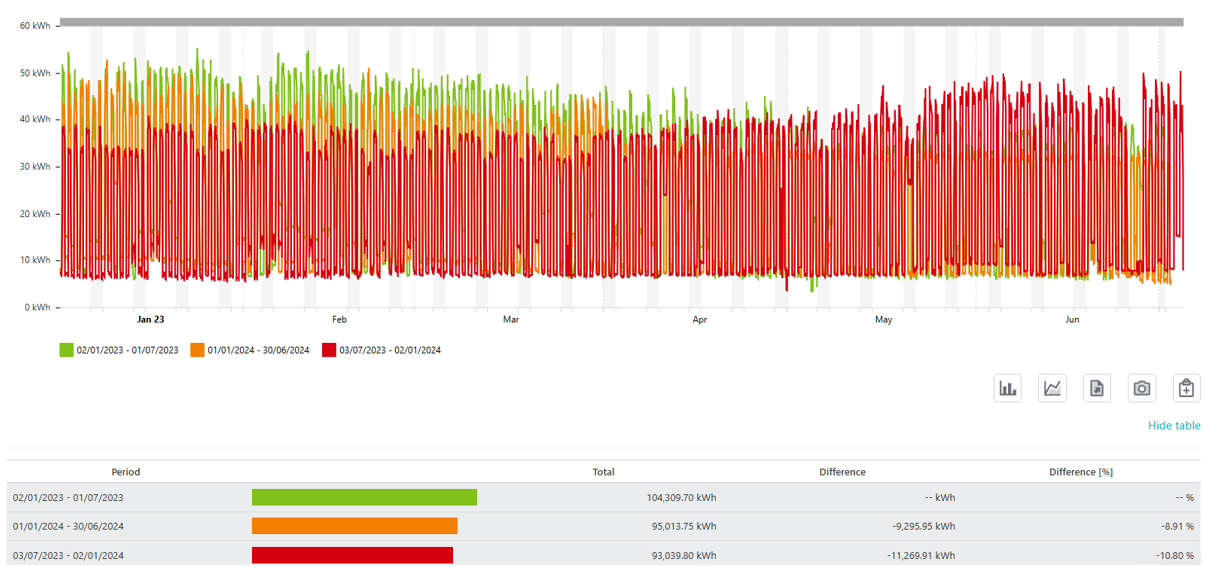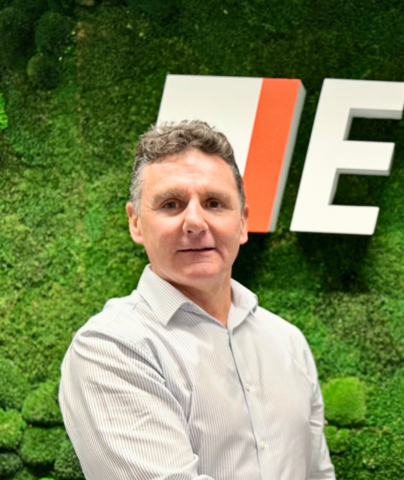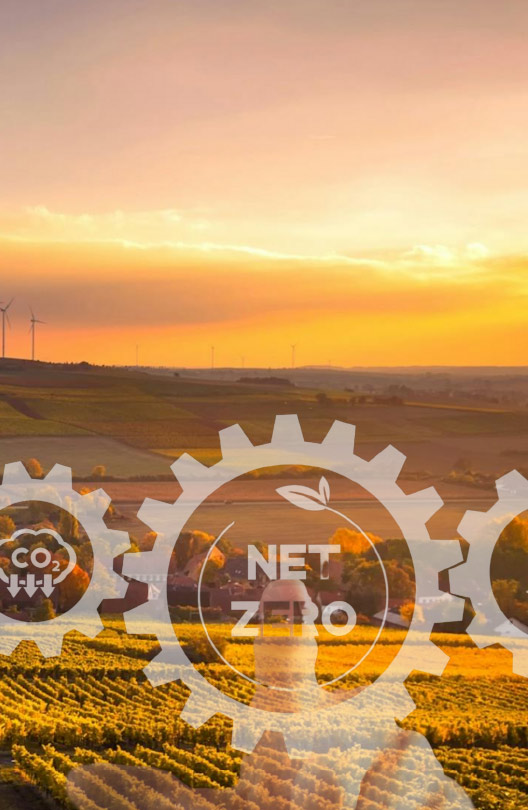THIS ARTICLE AT A GLANCE
- Understand ESOS Phase 4 Requirements
- Implement Impactful Energy Saving Measures
- Find Out How to Receive Compliance Support
CONTACT ETS
If you have any questions or would like to discuss further what you should be doing, ETS is here and willing to help.
Call 0117 205 0542
Email enquiries@energy-ts.com
Submit a contact form
CHECK OUR SERVICES
8 Ways Businesses Can Reduce Energy Use in the Workplace This Winter

Brief Summary
In this article, we highlight practical ways to lower energy use during the colder months, including thorough energy audits, LED lighting upgrades, optimised heating systems, BMS improvements, flexible working hours and planned maintenance. By engaging employees and managing energy proactively, businesses can significantly reduce both costs and emissions.
Why you should listen to us
We are recognised experts in operational energy management with a proven track record of delivering tangible cost savings and reduced carbon footprints for diverse industries. Our tailored strategies combine robust data analysis, industry best practices and real-world experience, ensuring the solutions we recommend are both practical and impactful.
Introduction
Energy prices typically rise in winter due to increased demand for heating, which leads to higher electricity and gas consumption. Weather-related interruptions in natural gas production and transport can further escalate costs, while global supply chain and market fluctuations—including Europe’s reliance on gas imports—also drive price volatility.
Observations from our Energy Managers show that electricity and gas unit prices have steadily increased in 2024. Colder weather increases energy demand, as reflected by “Degree Days,” a measure of heating and cooling requirements over specific periods. More Heating Degree Days (HDDs) indicate a greater need for heating fuels, whereas more Cooling Degree Days (CDDs) indicate higher demand for air conditioning. For instance, November 2024 was warmer than November 2023, increasing cooling needs.
Degree Days also influence pricing and budgeting strategies; during peak HDD periods, prices can rise due to heightened demand. Companies often use Degree Day forecasts to adjust prices dynamically, balancing profits, consumer expectations, and competition. From our previous year’s data, winter energy use was higher in several projects, affecting overall costs. As a result, adopting strategies to save on energy during the colder months can significantly benefit businesses.
Operating buildings more efficiently offers two main advantages. First, it reduces environmental impact by lowering greenhouse gas emissions and other pollutants. Second, it cuts costs, as more efficient energy use leads to lower utility bills.
Below are industry best practices combined with our team’s operational energy management expertise. Implementing these strategies can yield immediate and long-term energy savings well beyond the winter season.
1. Conduct an Energy Audit
An energy audit is a structured process to assess and enhance an organisation’s energy performance.
Key Parts of an Energy Audit
- Preparation and Planning: Define the audit’s scope, objectives, and boundaries. Gather initial data and select the audit team.
- Data Collection: Record precise information on energy consumption, equipment, and processes through measurements, observations, and interviews.
- Analysis: Examine the collected data to spot inefficiencies and areas for improvement, using energy performance indicators and industry benchmarks.
- Reporting: Compile findings into a detailed report that recommends energy-saving measures, outlines potential cost savings and provides an action plan.
- Follow-Up: Monitor how recommendations are implemented and verify the resulting energy savings.
Benefits of an Audit
- Improved Energy Performance Transparency: Pinpoint energy wastage and propose practical solutions.
- Cost Savings: Implementing audit recommendations can substantially reduce energy expenses.
- Regulatory Compliance: Help meet legal and regulatory requirements around energy and carbon.
- Enhanced Sustainability: Lower energy use and associated emissions.
- Informed Decision-Making: Gain deeper insights into energy usage, aiding strategic planning and operational changes.
2. Energy-Efficient LED Lighting
As winter evenings extend, buildings rely more on artificial lighting, raising electricity use. This usage is even higher if lighting systems are outdated rather than modern, efficient LEDs.
Where lighting controls are in place, ensure they are set to “auto” and that time schedules accurately align with occupancy patterns. Consider motion and daylight sensors, which work alongside time programmes to switch lights on only when needed and dim them in bright conditions.
The benefits of LED upgrades grow quickly when factoring in extended winter lighting hours. Speak to your lighting designer to find out more about energy efficient lighting. Typical simple-payback periods for LED investments are often under two years.
3. Optimise Heating Systems
Occupant comfort is vital for productivity, and efficient heating in winter is a key factor. Unfortunately, many heating systems run inefficiently during the colder months due to control or maintenance issues.
To maintain a comfortable workplace and minimise energy loss, ensure proper operation of the following:
- Sensor calibration: Make sure indoor and outdoor sensors are accurate.
- Boiler maintenance: Poorly maintained boilers are likelier to waste energy.
- Operating times: Match heating schedules to actual occupancy.
- More: Address any faults that force continual system operation.
4. Implement or Optimise a Building Management System (BMS)
A BMS controls and automates key building functions such as heating, cooling and water supply. When malfunctioning, it can cause excessive energy consumption or poor indoor conditions.
A recent case study highlights a 49% energy saving following a BMS upgrade and refined control strategies at Wokingham Borough Council, as documented by Energy & Technical Services.
5. Remote Working and Flexible Hours
With more organisations adopting flexible or hybrid working patterns, many office areas no longer follow the classic 9am–5pm schedule. Yet, in many sites we visit, HVAC controls remain set for traditional occupancy hours.
Two potential solutions include:
- Accurate timeclocks: Adjust schedules to match each area’s real usage. If building controls are not area-specific, consult your BMS provider about dividing zones.
- Occupancy and CO₂ sensors: Integrate these into your control system so heating and cooling respond to real-time demand.
6. Energy Management
Peter Drucker’s principle, “What gets measured gets managed,” underlines why measurement is central to effective energy management. An Energy Management System (EnMS) tailored to your operations is key to controlling energy use and boosting efficiency.
ISO 50001 offers a framework for creating a robust EnMS. According to the International Organization for Standardization, facilities implementing ISO 50001 can achieve up to a 30% improvement in energy performance within a few years.
7. Employee Awareness of Energy Conservation
Employee behaviour at work has a significant effect on energy consumption. Raising awareness of best practices is an essential part of an overall energy management strategy.
Engaging staff in these efforts is a cost-effective way to see tangible savings. Insights gained from energy audits and management systems can be shared with employees to highlight the direct impact of their day-to-day activities on carbon emissions. Encouraging this sense of responsibility has proven effective in prompting positive, long-term behavioural change.
8. Planned Preventative Maintenance
“Prevention is better than cure” applies directly to safeguarding the environment. In buildings, this means putting in place regular maintenance for vital plant and machinery.
Research from the IEE HARMONAC project revealed that a 7.5% reduction in airflow due to a dirty filter can reduce an air conditioning unit’s efficiency by 21.5%. This drop in efficiency directly affects operating costs and carbon emissions.
Well-maintained boilers, heat exchangers, pumps, BMS, and lighting control systems can also yield substantial energy savings.
Conclusion
Rising winter energy costs challenge organisations but also present valuable opportunities. By embracing efficient operational practices—such as energy audits, LED lighting upgrades, heating system optimisation, advanced BMS, flexible work schedules, and robust staff engagement—businesses can cut energy bills and reduce their environmental footprint. Establishing strong energy management protocols and regular maintenance further ensures long-term savings and sustainability. Overall, these integrated measures enable organisations to navigate winter energy demands effectively while contributing to wider environmental and financial goals.
Stay Compliant & Reduce Your Energy Costs
Get in touch with Energy Technical Services and speak with a specialist today: Contact Us






























































































